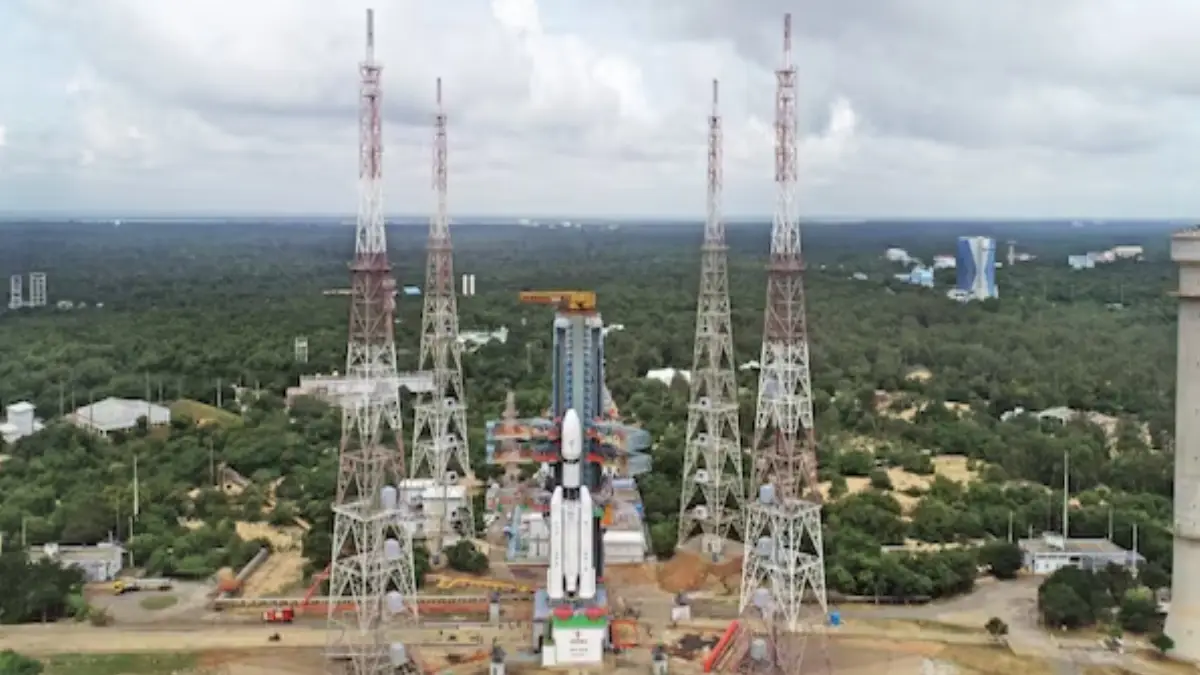ISRO has begun the final 24-hour countdown for the LVM3-M5 mission that will launch CMS-03, a multi-band communication satellite weighing about 4,410 kg, making it the heaviest communication satellite to be launched to Geosynchronous Transfer Orbit from Indian soil. The 43.5-metre LVM3 (also known as GSLV Mk III) is scheduled to lift off from Satish Dhawan Space Centre, Sriharikota, at 5:26 pm today, with the vehicle already rolled out and integrated on the second launch pad.
The three-stage LVM3 uses two S200 solid strap-ons, an L110 liquid core stage powered by twin Vikas engines, and a C25 cryogenic upper stage, enabling cost-effective insertion of 4,000 kg-class payloads into GTO and up to 8,000 kg to LEO. The M5 flight marks LVM3’s fifth operational mission; notably, the same launcher successfully propelled Chandrayaan-3, underscoring India’s maturing heavy-lift capability and fully indigenised cryogenic technology.
Also read: ISRO Proposes New Space Centre in Gujarat, CM Responds Positively
Mission objective
CMS-03 is designed to deliver high-capacity, multi-band communications across the Indian landmass and a wide oceanic region, enhancing maritime links, digital connectivity, satellite internet, and critical services such as telemedicine, education, emergency communications, and secure links for strategic users. Post-launch, the satellite will be injected into GTO and use onboard propulsion to reach its final geostationary slot.
Key Hardware Notes
- Strap-ons: Two S200 solids provide liftoff thrust.
- Core stage: L110 liquid stage with dual Vikas engines stabilises ascent.
- Upper stage: C25 cryogenic stage performs high-energy GTO insertion.
Context and Significance
- Heaviest GTO-class satellite launched from India, reducing reliance on overseas launchers for heavy comms spacecraft.
- Advances India’s space-based communications architecture while supporting downstream sectors and strategic connectivity at sea.
- LVM3’s track record from the CARE re-entry experiment to Chandrayaan-3 positions it as India’s workhorse for heavy missions, including the human-rated variant planned for Gaganyaan.
